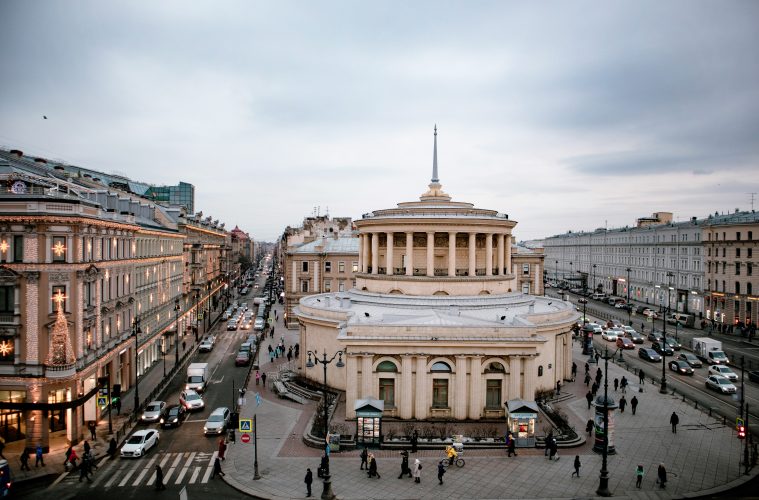Our two-week Viking River Cruise journey ended in St. Petersburg, and among many other compelling, memorable, activities, we went to The Hermitage, one of the great museums of the world. I have been to many museums worldwide, but this one easily rivals the Louvre in Paris and the Met in New York in terms of size and quality of objets d’art. Its collections, where only a small part is on permanent display, comprise over three million items, that includes the largest collection of paintings in the world.
And a warning: you can’t, or perhaps shouldn’t, see it all in one day. The evolutionary course of many cultures as seen through their art, is housed here, and there is just so much a human brain can hold. Wandering, with some guidance, seems a good way to go. Wear comfortable shoes also, but a warning: you can’t bring water bottles into the Hermitage. So drink up beforehand, and carry mints and chewing gum to quench thirst. The good news is you can take pictures. In some Russian museums, like the State Armoury Museum and the Tretyakov in Moscow, and the Faberge Museum in St. Petersburg, you can’t.
The Hermitage as a whole, occupies a large complex of six buildings along the Palace Embankment, overlooking the Neva River. These include the Winter Palace, the residence of Russian emperors, the Small Hermitage, Old Hermitage, New Hermitage and Hermitage Theatre. All can be accessed and viewed.
A little history here –the origins of the Hermitage can be traced back to the private art collection of Peter the Great, who lived in the late 1600’s and early 1700’s. He purchased numerous works during his travels abroad and hung them in his residence; but he died in 1725 before he could conceptualize a museum, based on his art collection. This was accomplished by his wife, Catherine, and the Hermitage was formally founded as an art museum in 1764.
The Hermitage buildings served as a home and workplace for nearly a thousand people, including the Imperial families. It was the home of the Romanov family from Peter III to the last Czar, Nicholas II. In addition to this, it also served as an extravagant showplace for displays of royal wealth. Events were held in these buildings including masquerade balls, elegant parties for the nobility, and grand receptions for state and government officials.
By the time Nicholas II (the Czar who with his family was assassinated in 1918) ascended the throne in 1894, he was heir to the greatest collection of art in Europe, and Western Russia. After the Revolution of 1917, the Hermitage became state-run and open to the public.
The Hermitage is breathtaking: collections of Leonardo Da Vinci, Rembrandt, Picasso, Matisse, Greek and Roman antiquities, ancient Russian Iconography, exhibits of Siberian and Central Asian art. And that is just the beginning. Not least among the attractions of the Hermitage is the museum architecture itself, with its interior decoration and architectural detail.
When I visited The Hermitage, I was grateful to have spent two days there; one day with the excellent Viking Cruise guided tour and one by myself, wandering the halls, breathing in and understanding much more of the dense, fierce and deeply artistic roots of Russian history, and taking a lot of pictures.

